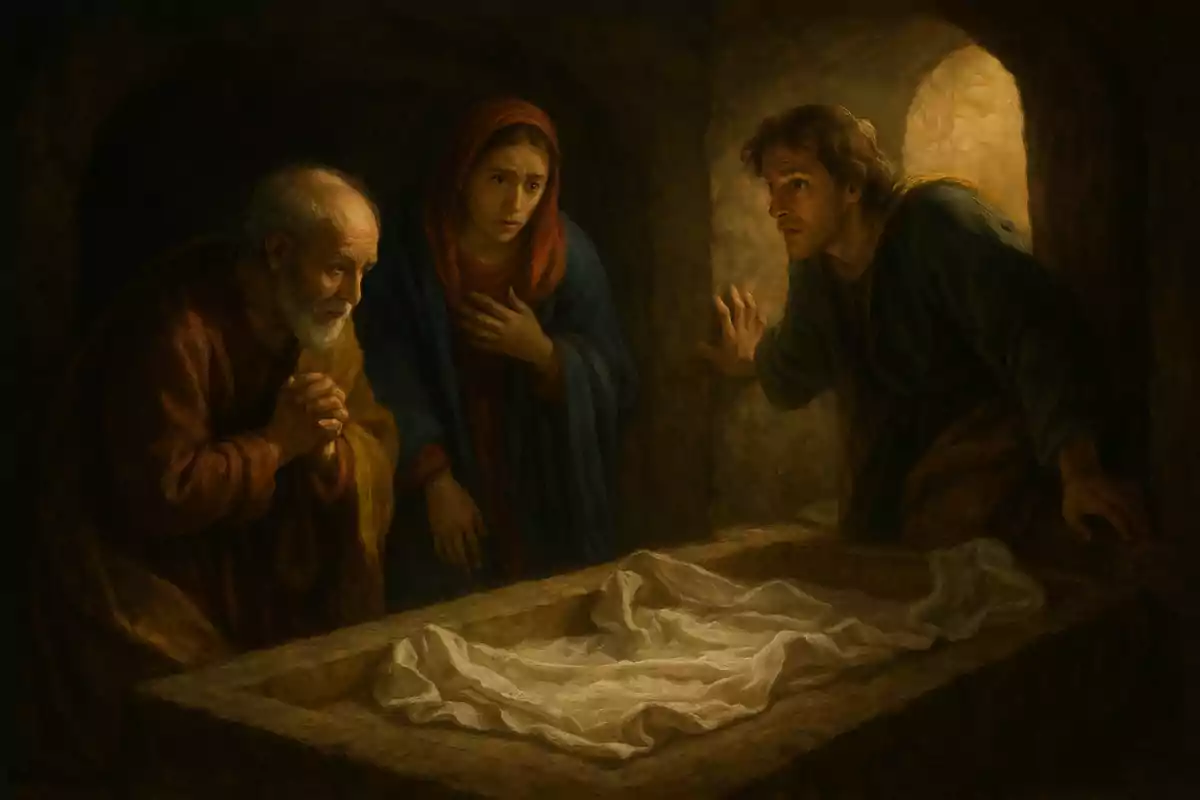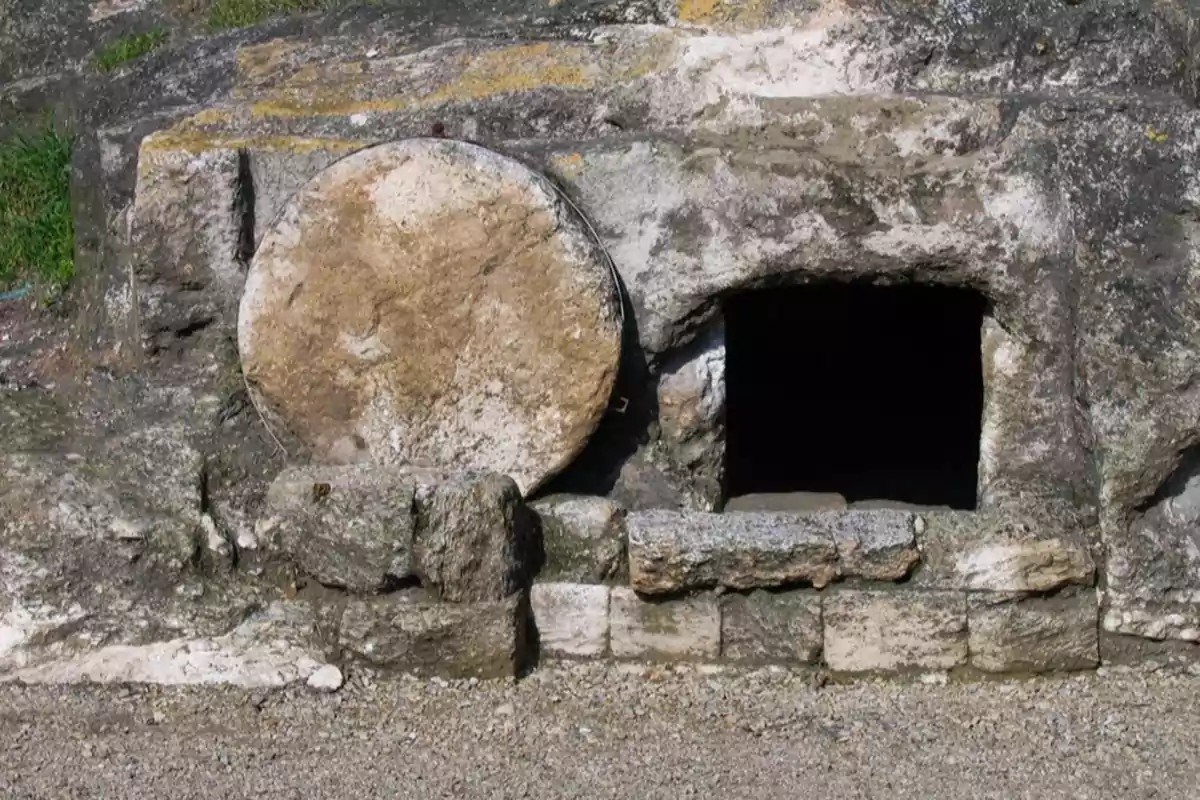
The Three Views of the Empty Tomb
In the Gospel of John in its Greek version, three verbs related to the basic meaning of 'see' are used
By Martín-Miguel Rubio Esteban
In the account given by the Gospel of John, at the beginning of chapter XX, in its Greek version, three verbs related to the basic meaning of "see" are used to tell us that the tomb where Jesus's body was placed was empty, without the body of the divine Master, only with the linens and the shroud separated without the body or the head.
This rich verbal repertoire of Greek full of nuances – synonymy, sensu stricto, doesn't exist in the language – contrasts with Latin, which at all times only says "vidit." Even in the first century of our era, and despite the Golden Age of Augustus, Latin could not hide its origins, a language of soldier-farmers.
Saint Mary Magdalene is the first disciple who "sees" the empty tomb moved, with the large stone that blocked the entrance to the tomb rolled away or lifted ("êrménon ek toû mnêmeíou"), and that "sees" is expressed by John with the verbal form "blépei."

Then, informed by the saint, Saint Peter and Saint John hurry to the tomb. The young Saint John, ahead of Saint Peter, arrives at the tomb first, and bending down ("parakýpsas") "sees" (again the verbal form "blépei") the linens ("othónia") with which Jesus's body had been shrouded lying ("keímena") on the ground. But when Saint Peter arrives and they both enter the tomb, the elder disciple "sees" all the things, linens and shroud separated, with the verbal form "theôreî."
Finally, Saint John, the first of the two to enter, realizes what has happened, his mind is illuminated, and the evangelist – who is himself – says that "he saw and believed." And to say that "saw," our homodiegetic subject uses the 3rd Person Singular Aorist of the verb "horaô"; that is, "eîden."
So, what differences in nuances are there between these three verbs used to say "see"? Blépô has the meanings of "direct the eyes to," "enjoy sight," "see clearly," "watch," and even "distrust." Regarding theôreô, it has the meanings of "contemplate," "examine," "inspect," "review," and "judge."

Finally, "horáô" means "observe," "understand," "comprehend," "perceive by the senses." That is, Saint Mary Magdalene and Saint John "saw clearly" that Jesus's tomb was empty; Saint Peter "inspected and reviewed" all the things and details of the tomb, and finally, the evangelist Saint John "understood" the nature and meaning of that empty tomb, a manifestation of the mystery of the resurrection.
Thus, the Greek language teaches us better in this case the three types of gaze that occurred in the event of Christ's resurrection, gazes that imply a rhetorical "gradatio," from the clear vision of things to the total understanding of their meaning.
More posts: